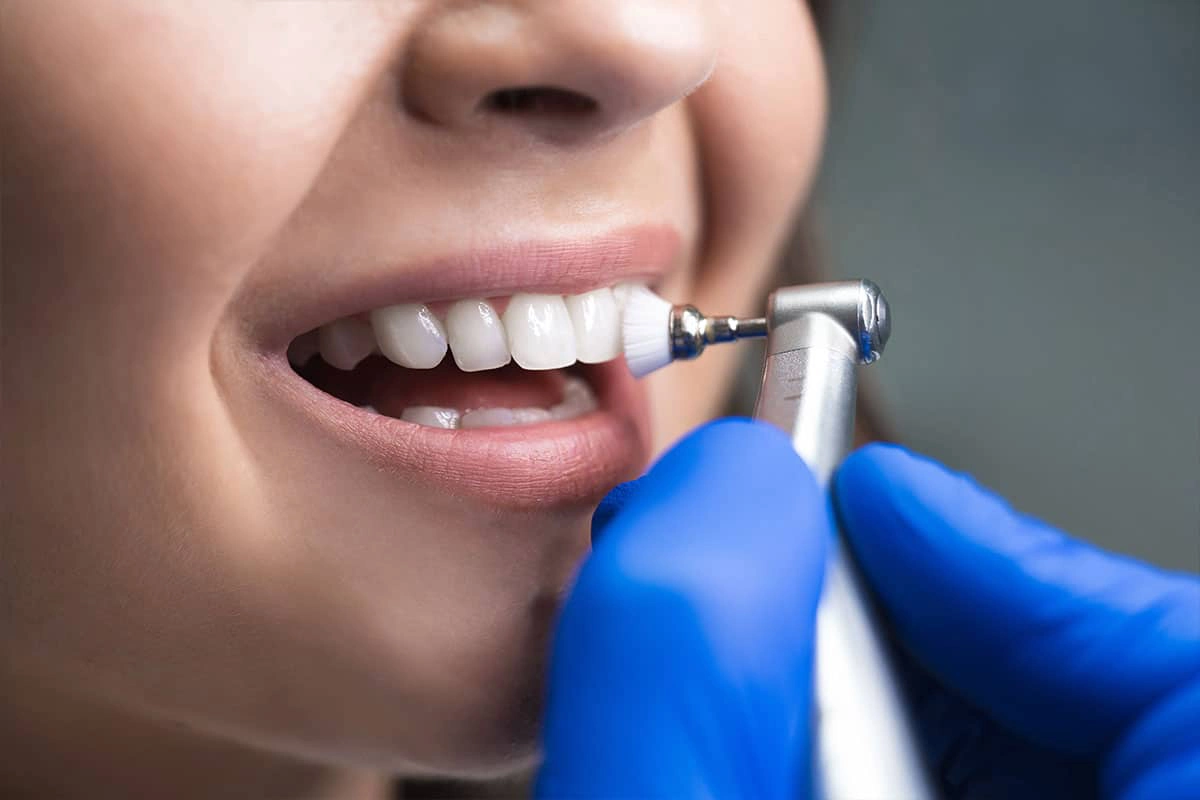Teeth Cleaning And Polishing
- Home
- Teeth Cleaning And Polishing

Teeth Cleaning Cost In Pune
Teeth cleaning and polishing are fundamental components of maintaining excellent oral health and achieving a radiant smile. Regular professional cleanings not only help prevent dental issues such as cavities and gum disease but also enhance the overall appearance of your teeth. At our dental practice, we offer comprehensive teeth cleaning and polishing services designed to keep your smile healthy and bright.
What is Teeth Cleaning and Polishing?
Teeth cleaning and polishing is a two-part process performed by a dental hygienist or dentist to remove plaque, tartar, and surface stains from your teeth. This procedure is essential for preventing dental problems and improving the aesthetics of your smile.
- Teeth Cleaning: Also known as prophylaxis, teeth cleaning involves the removal of plaque and tartar buildup from the surfaces of the teeth. Tartar, also called calculus, is hardened plaque that can only be removed with specialized dental tools.
- Teeth Polishing: After cleaning, polishing is performed to smooth the surfaces of the teeth and remove any remaining surface stains. This process enhances the shine of your teeth and helps to prevent the accumulation of plaque and stains in the future.
The Teeth Cleaning and Polishing Procedure
The teeth cleaning and polishing process typically involves several steps:
- Initial Examination
Your dentist or orthodontist will begin by thoroughly examining your teeth and gums. This may include X-rays to check for any underlying issues that might not be visible during the visual examination. This helps in identifying areas that need special attention during the cleaning process. Teeth cleaning cost in Pune - Scaling
Scaling is the process of removing plaque and tartar from the surfaces of your teeth, especially around the gumline. Using specialized instruments, the hygienist will carefully scrape away the buildup to clean each tooth thoroughly. This step helps to prevent gum disease and cavities. Teeth cleaning cost in Pune - Root Planing (if needed)
In cases where there is significant tartar buildup below the gumline or signs of gum disease, root planing may be performed. This involves smoothing the root surfaces to help the gums reattach and heal. Root planing is a deeper cleaning procedure that helps address more advanced periodontal issues. Teeth cleaning cost in Pune - Brushing and Polishing
After scaling, your teeth will be brushed with a gritty toothpaste that helps to remove surface stains and polish the teeth. This paste has a slightly abrasive texture that helps to smooth the tooth surfaces and enhance their shine. A high-powered electric toothbrush may be used for this step to ensure a thorough clean. Teeth cleaning cost in Pune - Flossing
Flossing is an essential part of the cleaning process that helps to remove plaque and debris from between the teeth and along the gumline. The hygienist will use dental floss or other interdental cleaning tools to ensure that all areas are clean and free of buildup. Teeth cleaning cost in Pune - Rinsing
After brushing and flossing, you will rinse your mouth with a fluoride mouthwash. This helps to remove any remaining debris and provides additional protection against cavities and gum disease. Teeth cleaning cost in Pune - Fluoride Treatment (optional)
Some cleanings may include a fluoride treatment to help strengthen tooth enamel and provide extra protection against decay. This treatment involves applying a fluoride gel or foam to your teeth for a few minutes. Teeth cleaning cost in Pune
Benefits of Teeth Cleaning and Polishing
Regular teeth cleaning and polishing offer several important benefits:
- Prevention of Dental Problems
Routine cleanings help to remove plaque and tartar that can lead to cavities, gum disease, and other dental issues. By addressing these factors early, you can prevent more serious problems and avoid costly treatments. Teeth cleaning cost in Pune - Improved Oral Health
Professional cleanings help to maintain healthy gums and teeth, reducing the risk of inflammation, infection, and tooth loss. Clean teeth are also less likely to harbor harmful bacteria that can contribute to bad breath. Teeth cleaning cost in Pune - Enhanced Aesthetic Appeal
Polishing your teeth removes surface stains and enhances their natural shine. This results in a brighter, more attractive smile that can boost your confidence and improve your overall appearance. Teeth cleaning cost in Pune - Early Detection of Issues
Regular cleanings provide an opportunity for your dental team to detect potential issues early, such as cavities, gum disease, or other oral health concerns. Early detection allows for timely intervention and more effective treatment. Teeth cleaning cost in Pune - Fresh Breath
By removing plaque, tartar, and food particles, professional cleanings help to improve breath freshness. This is especially beneficial for those who experience persistent bad breath despite regular brushing and flossing. Teeth cleaning cost in Pune
Recommended Frequency
For optimal oral health, it is generally recommended to have professional teeth cleaning and polishing performed every six months. However, your dentist may recommend more frequent cleanings if you have specific dental conditions or are at higher risk for oral health issues. Regular check-ups and cleanings help ensure that your teeth and gums remain in good condition and allow your dental team to provide personalized care. Teeth cleaning cost in Pune
Aftercare and Maintenance
Following your teeth cleaning and polishing appointment, it’s important to maintain good oral hygiene practices to keep your smile healthy:
- Brush Twice a Day: Use a fluoride toothpaste and brush your teeth at least twice daily to remove plaque and prevent buildup.
- Floss Daily: Flossing helps remove plaque and food particles from the teeth and gum line.
- Avoid Staining Foods and Drinks: Limit foods and drinks that stain your teeth, such as coffee, tea and red wine.
- Use Mouthwash: Antibacterial mouthwash can reduce the symptoms and clear your breath.
- Attend Regular Dental Check-Ups: Schedule regular dental visits to ensure that your teeth and gums remain healthy and to catch any potential issues early. Teeth cleaning cost in Pune
